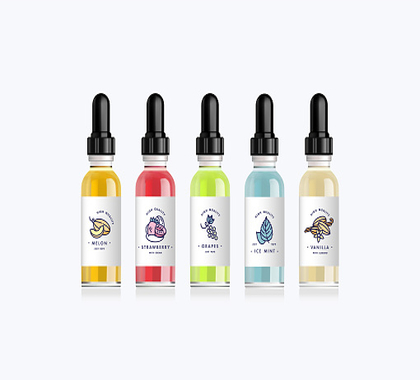On September 17, 2019, New York Gov. Andrew Cuomo issued an order to the New York Department of Health (NYDOH) banning the sale of flavored electronic cigarettes and vaping devices. With the swipe of a pen, New York became one of the first states to ban flavored e-cigarette products. Shockingly, NYDOH gave retailers “an approximate two-week grace period before conducting visits to enforce” the ban, with inspections “beginning on Friday, October 4.” Retailers in violation were to “face fines of up to $2,000 per violation.”
On October 3, 2019, in response to a lawsuit filed against the ban by the Vapor Technology Association and two vaping manufacturers (VTA et al.), a New York Appellate Court “granted a temporary restraining order to halt New York’s enforcement of the ban.” The ban is effectively delayed until October 18, 2019.
New York’s flavor ban is just one of many by states that have prematurely reacted to recent headlines purporting hospitalizations due to lung illnesses caused by vaping devices. Cuomo also cited flavors as “a principal reason that youth initiate and maintain e-cigarette use.” He is dead wrong.
Although reducing youth e-cigarette use is laudable, flavor bans are unlikely to actually reduce youth e-cigarette use. Further, such policies restrict adult access to tobacco harm reduction products, which have helped an estimated three million American adults quit smoking combustible cigarettes. Flavor bans are also likely to have little impact on hospitalizations, as the Centers for Disease Control and Prevention (CDC) and state health departments are increasingly linking recent vaping-hospitalizations to the use of vaping products containing tetrahydrocannabinol (THC).
To date, flavor bans have had little to no impact on youth vaping rates. The Heartland Institute analyzed results from the 2017-18 California Youth Tobacco Survey (CYTS) and found that despite flavor restrictions in some localities, youth use of e-cigarettes in those areas increased after the bans were enacted.
Santa Clara County, California, banned flavored tobacco product sales to age-restricted stores in 2014. Despite this, youth e-cigarette use increased while the ban was in effect. For example, in the 2015-16 CYTS, 7.5 percent of Santa Clara high school students reported current use of e-cigarettes. In the 2017-18 CYTS, this increased to 10.7 percent.
The notion of banning flavors in e-cigarette products in response to recent vaping-related hospitalizations is asinine. Once again, the CDC and several state health departments have linked the vast majority of recent vaping-related hospitalizations to the use of illicit and unregulated products, not lawful and regulated flavored products.
A CDC Morbidity and Mortality Weekly Report obtained information for 514 of 805 possible vaping-related hospitalizations. Of the 514 patients, 395, or 77 percent, “reported using THC-containing products.”
Many states have reached similar conclusions. The Connecticut Department of Health “interviewed nine of [their state’s] 13 patients with vaping-related injury.” All nine patients reported the use of THC products. The Texas Department of State Health Services identified 75 potential vaping-related hospitalizations, with “87% of cases interviewed” reporting using THC products. Of the 23 potential vaping-related hospitalizations in Iowa, 18 patients “have reported the use of THC.”
Further, Oregon’s two vaping-related deaths have been attributed to THC products, as announced September 3 and September 26. The Minnesota Department of Health reported an individual died from a “lung injury [that] was associated with vaping illicit THC products.”
A statewide flavor ban will also prove to be a huge economic loss for New York. In its lawsuit, VTA et al. notes that “the [New York] vapor industry accounts for over [$1.197 billion] annually in economic output and generates jobs for approximately 8,110 individuals.” This industry annually pays an estimated $99 million in state taxes and more than $30 million in sales taxes. Additionally, most brick-and-mortar vape shops in the Empire State “are small businesses, with many having five or fewer employees.”
It is disingenuous that New York would eliminate a tobacco harm reduction tool for New Yorkers while dedicating very little of the abundant tobacco moneys it receives to programs that can help smokers quit. In 2019, New York received an estimated $2.0371 billion in tobacco settlement payments and taxes, yet only allocated $39.3 million, or 1 percent, on tobacco education and prevention programs. Further, New York has securitized tobacco settlement payments, with 35 counties and New York City bonding out future tobacco settlement money, and “in some cases, counties received far less in revenues.” New York state’s pension fund also has investments in “Philip Morris, Altria, Reynolds America, British American Tobacco and Imperial Tobacco.”
Evidence suggests that flavor bans do not decrease youth e-cigarette use. Rather than imposing bans on flavored vaping devices, New York should allocate more of the bountiful tobacco moneys it receives to tobacco control programs. Further, public health agencies are increasingly linking vaping-related hospitalizations to the use of illicit and unregulated vaping devices, and a flavor ban will essentially extinguish a $1 billion industry in the Empire State.
The following documents provide more information on electronic cigarettes and vaping devices and tobacco harm reduction.
Tobacco Harm Reduction 101: A Guidebook for Policymakers
https://heartland.org/publications-resources/publications/latest-heartland-policy-booklet-addresses-vaping-myths
This booklet from The Heartland Institute aims to inform key stakeholders on the much-needed information on the benefits of electronic cigarettes and vaping devices. Tobacco Harm Reduction 101details the history of e-cigarettes, including regulatory actions on these products. The booklet also explains the role of nicotine, addresses tax policy and debunks many of the myths associated with e-cigarettes, including assertions about “popcorn lung,” formaldehyde, and the so-called youth vaping epidemic.
Podcast Series: Voices of Vapers
https://heartland.org/multimedia/podcasts?fromDate=&toDate=&q=voices+of+vapers
In this weekly podcast series, State Government Relations Manager Lindsey Stroud talks with researchers, advocates, and policymakers about tobacco harm reduction and electronic cigarettes. The series provides important information about the thousands of entrepreneurs who have started small businesses thanks to THRs and the millions of adults that have used electronic cigarettes and vaping devices to quit smoking tobacco cigarettes.
Vaping, E-Cigarettes, and Public Policy Toward Alternatives to Smoking
https://heartland.org/publications-resources/publications/vaping-e-cigarettes-and-public-policy-toward-alternatives-to-smoking
For decades, lawmakers and regulators have used taxes, bans, and burdensome regulations as part of their attempt to reduce the negative health effects of smoking. Recently, some have sought to extend those policies to electronic cigarettes. This booklet from The Heartland Institute urges policymakers to re-think that tax-and-regulate strategy. Policymakers should be mindful of the extensive research that supports tobacco harm reduction and understand bans, excessive regulations, and high taxes on e-cigarettes often encourage smokers to continue using more-harmful traditional cigarette products.
Policy Tip Sheet: Vaping Hospitalizations Likely Linked to Black Markets
https://heartland.org/publications-resources/publications/policy-tip-sheet-vaping-hospitalizations-likely-linked-to-black-markets
In this Policy Tip Sheet, State Government Relations Manager Lindsey Stroud examines recent headlines, finding vaping-related hospitalizations are likely linked to illegal black market vaping products. Stroud examines reports from January 2019 which found youth were being hospitalized due to marijuana vaping products. Further, in 2018, the U.S. Army warned of the dangers of vaping synthetic marijuana after more than 90 military personnel were hospitalized and two died after vaping such devices. Further, none of the reports on the recent hospitalizations have been able to identify a single product that would have caused adverse health effects.
Research & Commentary: Centers for Disease Control and Prevention Link Major of Vaping-Related Hospitalizations to THC Product
https://heartland.org/publications-resources/publications/research–commentary-centers-for-disease-control-and-prevention-link-majority-of-vaping-related-hospitalizations-to-thc-products
In this Research & Commentary, Heartland State Government Relations Manager Lindsey Stroud examines the Centers for Disease Control and Prevention’s Morbidity and Mortality Weekly Report which found nearly 77 percent of vaping-related hospitalizations are due to the use of tetrahydrocannabinol products. These findings are similar to what have been reported in other states, including Connecticut, Oregon, Texas, and Utah.
Research & Commentary: Flavor Bans Do Not Reduce Youth E-Cigarette Use
https://heartland.org/publications-resources/publications/research–commentary-flavor-bans-do-not-reduce-youth-e-cigarette-use
In this Research & Commentary, State Government Relations Manager Lindsey Stroud examines the California Youth Tobacco Survey results from 2017-18, finding youth vaping has increased in several California localities that have restricted access to flavored tobacco product. Stroud finds youth vaping has increased in both Santa Clara and Contra Costa counties. Stroud also notes that banning flavored e-cigarettes is likely to reduce the number of adult smokers switching from combustible cigarettes to tobacco harm reduction devices, and could lead former smokers back to cigarettes.
Research & Commentary: Largest Vaping Survey Finds Flavors Play Important Role in Tobacco Harm Reduction
https://heartland.org/publications-resources/publications/research–commentary-largest-vaping-survey-finds-flavors-play-important-role-in-tobacco-harm-reduction
In this Research & Commentary, Heartland State Government Relations Manager Lindsey Stroud examines a survey of nearly 70,000 adult vapers in the United States. The survey was completed in response to the U.S. Food and Drug Administration’s recent Advanced Notice of Proposed Rulemaking seeking comment on the role of flavors in tobacco products. The authors found nearly 95 percent of survey respondents were at one time smokers and the majority reported using flavors at the point of e-cigarette initiation. Stroud compares this to other surveys. She concludes, “eliminating flavors will force [vapers] to vape only tobacco-flavored e-cigarettes, which would likely cause them to return to combustible cigarettes.” Stroud also found research has found e-cigarettes are a key tobacco harm reduction product and could help alleviate state budgets by mitigating health care costs.
Nothing in this Research & Commentary is intended to influence the passage of legislation, and it does not necessarily represent the views of The Heartland Institute. For further information on this and other topics, visit the Budget & Tax News website, The Heartland Institute’s website, our Consumer Freedom Lounge, and PolicyBot, Heartland’s free online research database.
The Heartland Institute can send an expert to your state to testify or brief your caucus; host an event in your state; or send you further information on a topic. Please don’t hesitate to contact us if we can be of assistance! If you have any questions or comments, contact Heartland’s government relations department, at [email protected] or 312/377-4000.




